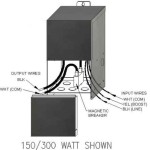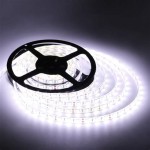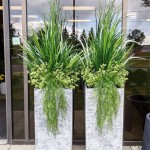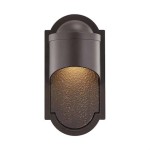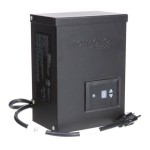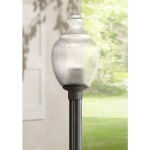Illuminating the Outdoors: A Comprehensive Look at LED Outdoor Lighting Fixtures
LED outdoor lighting fixtures have revolutionized the way exterior spaces are illuminated. These fixtures offer a superior combination of energy efficiency, longevity, and versatility compared to traditional lighting options. From residential gardens to commercial parking lots, LED lighting provides enhanced visibility, security, and aesthetic appeal. This article explores the various types of LED outdoor lighting fixtures, their benefits, and key considerations for selecting the most appropriate solutions for specific applications.
The transition to LED technology in outdoor lighting has been driven by a global focus on sustainability and energy conservation. Traditional lighting sources, such as incandescent and halogen lamps, consume significant amounts of energy and have short lifespans, leading to frequent replacements and higher operational costs. LED fixtures, on the other hand, consume significantly less power while delivering comparable or superior light output. This efficiency translates to substantial cost savings over the lifespan of the fixture, making LEDs a financially prudent choice for both residential and commercial property owners.
Furthermore, the durability and robustness of LED technology make it particularly well-suited for the harsh conditions often encountered outdoors. LED fixtures are typically designed to withstand extreme temperatures, moisture, and physical impact, ensuring reliable performance in a variety of environments. This durability minimizes maintenance requirements and extends the lifespan of the fixture, further contributing to reduced operational costs.
Types of LED Outdoor Lighting Fixtures
The market offers a wide array of LED outdoor lighting fixtures, each designed for specific purposes and applications. Understanding the different types available is crucial for selecting the most effective lighting solution for a particular space. Here are some of the most common types:
1. LED Floodlights: These fixtures are designed to provide broad, diffused illumination over a large area. They are commonly used to illuminate building facades, parking lots, sports fields, and security perimeters. LED floodlights offer high lumen output and can be adjusted to direct light where it is needed most. They are available in a variety of sizes and wattages to accommodate different area requirements.
2. LED Spotlights: Unlike floodlights, spotlights provide a concentrated beam of light, ideal for highlighting specific features, such as architectural details, landscaping elements, or signage. LED spotlights are often used for accent lighting and can be adjusted to create dramatic visual effects. They are available in various beam angles to control the spread of light.
3. LED Pathway Lights: These low-level fixtures are designed to illuminate walkways, driveways, and garden paths, providing safe and aesthetically pleasing illumination. LED pathway lights are typically small and unobtrusive, blending seamlessly into the surrounding landscape. They are available in a variety of styles and finishes to complement different architectural designs.
4. LED Wall Packs: Wall packs are typically mounted on the exterior walls of buildings to provide general illumination and enhance security. They are commonly used in commercial and industrial settings to illuminate loading docks, entryways, and parking areas. LED wall packs are designed to be vandal-resistant and weather-proof, ensuring reliable performance in demanding environments.
5. LED Bollard Lights: Bollard lights are freestanding fixtures that are typically used to define pathways, delineate boundaries, and provide low-level illumination. They are commonly used in parks, plazas, and pedestrian areas. LED bollard lights are available in a variety of styles and heights to suit different applications.
6. LED String Lights: String lights are a popular choice for creating a festive and inviting atmosphere in outdoor spaces. They are commonly used to decorate patios, decks, and gazebos. LED string lights are energy-efficient and long-lasting, making them a practical and aesthetically pleasing lighting solution.
7. LED Post Top Lights: Post top lights are mounted on poles and are commonly used to illuminate streets, parking lots, and public areas. They provide a wide distribution of light, enhancing visibility and safety. LED post top lights are available in a variety of styles and wattages to suit different applications.
8. LED In-Ground Lights: These fixtures are installed flush with the ground and are used to illuminate architectural features, trees, and landscaping elements from below. LED in-ground lights are designed to be weather-resistant and durable, ensuring long-lasting performance. They create an interesting and subtle lighting effect.
Benefits of Using LED Outdoor Lighting
The advantages of using LED technology for outdoor lighting are multifaceted and contribute to significant improvements in energy efficiency, operational costs, and environmental impact. Here's a detailed look at the key benefits:
1. Energy Efficiency: LEDs consume significantly less energy than traditional lighting sources. They convert a higher percentage of electricity into light, minimizing energy waste. This translates to lower electricity bills and a reduced carbon footprint. The energy savings can be substantial, especially in large-scale installations.
2. Long Lifespan: LED fixtures have a significantly longer lifespan than incandescent, halogen, or fluorescent lamps. This reduces the frequency of replacements, saving on maintenance costs and labor expenses. A typical LED fixture can last for tens of thousands of hours, significantly outperforming traditional lighting options.
3. Durability: LEDs are solid-state devices, making them more resistant to shock, vibration, and impact than traditional lamps. They are also less susceptible to damage from extreme temperatures and weather conditions. This durability makes them ideal for outdoor applications where they are exposed to harsh environments.
4. Instant On/Off: LEDs turn on instantly without any warm-up time. This is particularly beneficial for security lighting, where immediate illumination is critical. Traditional lamps can take several minutes to reach full brightness, which can be a significant drawback in emergency situations.
5. Dimming Capabilities: LEDs can be easily dimmed, allowing for customized lighting levels and energy savings. Dimming can be controlled manually or automatically using sensors and timers. This flexibility allows for the creation of different lighting moods and the optimization of energy consumption.
6. Directional Lighting: LEDs emit light in a specific direction, minimizing light pollution and directing illumination where it is needed most. This reduces wasted light and improves overall visibility. Traditional lamps emit light in all directions, requiring reflectors and diffusers to direct the light, which can reduce efficiency.
7. Environmentally Friendly: LEDs do not contain mercury or other hazardous materials, making them environmentally friendly and easy to dispose of. Traditional lamps, such as fluorescent lamps, contain mercury, which can pose a health risk if the lamps are broken.
8. Color Rendering: LEDs offer excellent color rendering capabilities, accurately displaying the colors of objects and enhancing visual clarity. This is particularly important for security lighting and landscape lighting, where accurate color representation is essential.
Key Considerations When Selecting LED Outdoor Lighting Fixtures
Choosing the right LED outdoor lighting fixtures requires careful consideration of several factors to ensure optimal performance, energy efficiency, and aesthetic appeal. These factors include light output, color temperature, beam angle, ingress protection (IP) rating, and fixture style. Here’s a detailed overview:
1. Light Output (Lumens): Lumens measure the total amount of visible light emitted by a fixture. The required lumen output depends on the size of the area to be illuminated and the desired level of brightness. For example, a large parking lot will require fixtures with higher lumen output than a small garden path. It’s important to consider the specific application and choose fixtures that provide adequate illumination without being overly bright or creating glare.
2. Color Temperature (Kelvin): Color temperature is measured in Kelvin (K) and describes the color of the light emitted by a fixture. Lower Kelvin values (e.g., 2700K) produce a warm, yellowish light, while higher Kelvin values (e.g., 5000K) produce a cool, bluish-white light. The choice of color temperature depends on the desired ambiance and the specific application. Warm light is often preferred for residential settings, while cool light is often used for commercial and industrial areas.
3. Beam Angle: The beam angle is the angle at which light is distributed from a fixture. Narrow beam angles are ideal for highlighting specific objects, while wide beam angles are better suited for general illumination. The choice of beam angle depends on the desired effect and the specific application. Spotlights typically have narrow beam angles, while floodlights have wide beam angles.
4. Ingress Protection (IP) Rating: The IP rating indicates the level of protection a fixture offers against dust and water intrusion. A higher IP rating indicates greater protection. For outdoor applications, it is essential to choose fixtures with an appropriate IP rating to ensure reliable performance in all weather conditions. Fixtures exposed to rain or snow should have an IP rating of at least IP65.
5. Fixture Style: The style of the fixture should complement the surrounding architecture and landscape. There are a wide variety of styles available, from traditional to contemporary. It’s important to choose fixtures that enhance the aesthetic appeal of the outdoor space while providing effective illumination. Consider the materials, finish, and overall design of the fixtures to ensure they blend seamlessly into the environment.
6. Energy Efficiency (Watts and Lumens per Watt): While LEDs are generally energy-efficient, it's still important to compare the wattage and lumens per watt (lm/W) of different fixtures. This will help you determine the most energy-efficient option for your needs. A higher lumens per watt rating indicates greater energy efficiency.
7. Warranty: A good warranty provides assurance of the quality and reliability of the fixture. Look for fixtures with a warranty of at least 3-5 years. A longer warranty indicates that the manufacturer has confidence in the durability of their product.
8. Certifications: Look for fixtures that are certified by reputable organizations, such as UL, ETL, or DLC. These certifications indicate that the fixture has been tested and meets certain safety and performance standards.
By carefully considering these factors, property owners can select LED outdoor lighting fixtures that provide optimal illumination, energy efficiency, and aesthetic appeal for their specific needs.

Home Decorators Collection Westbury 8 5 In Aged Iron Small Led Outdoor Wall Light Fixture With Clear Glass Kb S 08304 The Depot

Home Decorators Collection Westbury 11 In Aged Iron Large Led Outdoor Wall Light Fixture With Clear Glass Kb 08304 The Depot

Fordham 8 High Black Led Outdoor Wall Light 5c013 Lamps Plus

Outdoor Led Lighting Exterior Light Fixtures E Conolight

Home Decorators Collection Ansel Black Modern Bubble Glass Integrated Led Outdoor Hardwired Garage And Porch Light Cylinder Sconce Amp105 Hdcbl The Depot

Led Outdoor Landscape Lighting Black 3 Tier Pagoda Path Light Warm White Low Voltage

Modern Forms Hiline Black 8 High Dark Sky Led Outdoor Light 59e17 Lamps Plus

Victogate Outdoor Wall Lights Dusk To Dawn Lighting Motion Sensor Black Porch For House Front Led Light Fixtures Lantern Exterior Sconce Entryway Garage Com

Led Outdoor Wall Light Dusk Dawn Sensor White Water Glass

18w Beam Led Outdoor Wall Lamp Up Down Triple Light Fixture Waterproof Door
Related Posts
